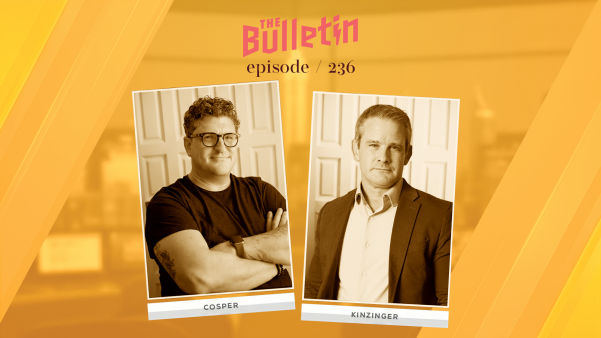This article originally appeared in two parts in the July 28, 1972 and the August 25, 1972 issues of Christianity Today.
The program of training laymen for the of evangelism at the Coral Ridge Presbyterian Church in Fort Lauderdale, Florida, grew out of the specific situation of that church; yet it has within it some readily transferable techniques that have been successfully used by other congregations. We believe its principles embody some of the New Testament teaching on evangelism. It is program of personal lay evangelism and does not begin to encompass many of the other sound and biblical methods, such as mass evangelism and pulpit evangelism.
Realizing that laymen are perhaps the most strategic and also the most unused key to the evangelization of the world, we have tried to build a program that will motivate, recruit, and train men and women to begin the job of evangelism and then keep doing it. This is not an easy task. And yet the basic principles of New Testament evangelism seem to require this mobilization of the laity.
Christ’s first command to his new followers in the first chapter of Mark was, “Come ye after me, and I will make you to become fishers of men.” His last words on this earth to his disciples were, “But ye shall receive power, after that the Holy Ghost is come upon you: and ye shall be witnesses unto me both in Jerusalem, and in all Judea, and in Samaria, and unto the uttermost part of the earth.” Christ began and ended his ministry with the command to be witnesses and fishers of men. This thrust of his teaching is summed up in the Great Commission, where he tells his followers to go into all the world and preach the Gospel to every creature. The first principle, then, is that the Church is a body under orders by Christ to share the Gospel with the whole world.
How is this to be done and by whom? One of the greatest victories Satan has scored against the Church is the idea he has foisted off on probably 90 per cent of it that sharing the Gospel is the task of ministers and evangelists only, not of laymen. So successful has Satan been with this stratagem that probably 95 per cent of our church members never lead anyone to Christ. I am thankful that today there is an obvious trend in the opposite direction, as more and more laymen are realizing and accepting their responsibility to witness. The second important principle, then, is that laymen as well as ministers must be trained to evangelize. Laymen make up over 99 per cent of the Church. If they are AWOL, there is little doubt that the battle will be lost.
It was the witness of the entire early Church that produced such a tremendous impact upon the world. In Acts 8:4 we read, “Therefore they that were scattered abroad went everywhere preaching the word.” Some have said, “Doesn’t this refer to the apostles? What do laymen know about such things?” This text has been ripped from its context and used as a pretext for idleness. But let us examine its context. In Acts 8:1 we read, “They were all scattered abroad … except the apostles.” This means those who “went everywhere preaching the word” were all the believers “except the apostles.” And the term translated “preaching the word” is from the Greek verb that means “to evangelize.” In the early Church, then, the laymen went everywhere “evangelizing.” This is the lost ideal we are striving to regain.
We have seen what needs to be done and by whom. Now, how are we going to get them to do it?
Hundreds of thousands of messages have been preached on the responsibility of Christians to witness, and yet a formidable army of lay witnesses is notably absent. Something must be missing. This brings us to the next important principle: evangelism is more caught than taught. The average person can no more learn to evangelize in a classroom than he can learn to fly an airplane in the living room. The missing link in evangelistic instruction is on-the-job training—something Christ provided.
Our program at Coral Ridge grew out of the experiences I had in starting this church, which was a home-mission project and is now nine years old. I came here directly from seminary. Although I preached evangelistically, had taken all of the courses on evangelism offered at the seminary, and had read books on the subject. I found that the sophisticated people of Fort Lauderdale did not respond to my message from the pulpit. And when it came to confronting individuals face to face with the gospel, I was sadly lacking in both confidence and know-how. After eight or ten months of preaching, the congregation had dwindled from forty-five to seventeen people, and I was a most discouraged young minister.
Around this time I was invited to Decatur, Georgia, to preach during ten days of evangelistic services. I accepted, happy to get away for a while from my Fort Lauderdale fiasco. When I arrived the pastor told me I would preach each night, but more importantly, he said, we would visit homes each day—morning, noon, and night—to present the Gospel to people individually.
I was petrified. I knew I had absolutely no ability to do this. However, the next morning we went out. After about half an hour of my stumbling attempts at evangelism, the pastor took over the conversation and in about fifteen or twenty minutes led the man to Christ. I was astonished but did not realize the impact this was to have on my life. For ten days I watched this pastor lead one person after another to Christ, for a total of fifty-four. I went back to Fort Lauderdale a new man and began to do just what I had seen done. People responded. Soon dozens, scores, and then hundreds accepted Christ. I had received on-the-job training, and it had paid off.
I then realized that there was a limit to the number of people I myself could talk to, and that what I ought to do was to train others to do the same thing. What I did is the same thing probably thousands of other ministers have done: I organized a class on witnessing. I gave the class members six lessons and sent them out. They all went home terrified! I waited a few months and tried again. This time I gave twelve lessons. Again no success. A few more months and another series, more elaborate. Fifteen weeks—again no results. I do not know of one adult who was brought to Christ as a result of these witnessing classes.
Finally the truth struck me like a bolt of lightning. I myself had attended classes for three years and had not learned how to witness. Not until someone who knew how took me out into people’s homes did I gain the confidence to do it myself. And so I began the program that has continued at Coral Ridge for the past six years. I took out one person until he had confidence to witness, and then another, and another. And so it has grown. After the people are trained, they can train others.
* * *
In envisioning an evangelism program, a pastor typically begins by preaching on the subject and then inviting everyone who is willing to take part to come on some specified night to begin. This is the way we tried at first to motivate and recruit people. It was not very successful. The basic motivation will no doubt begin from the pulpit with sermons on the responsibility, privilege, and necessity of witnessing for Christ. However, our experience showed us that the actual recruiting should be done on a person-to-person basis.
When Christ called his apostles, he first prayed all night and then called them specifically by name. An “apostle” was one sent forth with a commission. In its broader sense the word refers to every Christian who has been sent forth by Christ with a Great Commission. I recommend that after much prayer the minister select several people whom he would like to take with him to learn how to evangelize.
I did not want to begin a program in this small way with only one or two persons; I wanted to train a whole class of evangelists at one time. The result was that I ended up with none. If you begin with a few, it doesn’t take very long for them to grow into a large body of witnesses. Say you start with four. At the end of the training program each of these four trained persons would recruit two more workers, and the minister would recruit four more. Now there would be the original four plus their eight, making twelve, plus the minister’s new four, making sixteen, plus the minister, for a total of seventeen. After the next class the sixteen laymen would get thirty-two more, making forty-eight, plus the minister’s four, which makes fifty-two; plus the minister, making fifty-three. Soon it can grow to a hundred, two hundred, and so on.
New workers are recruited by personal visits. A trained worker explains the program and then invites the prospective worker to a dinner. Here there is a greater explanation of the goals and principles of the program, plus testimonies of what has been accomplished. Then the potential workers are asked to commit themselves to the entire four-and-a-half-month training program or else not to start.
We give three types of training:
1. Class instruction. On the day the people come to the church for visitation, they meet together for half an hour of instruction before going out into the field. There is a brief lecture on the topic of the week, and study assignments for the following week are given. Then class members divide into pairs to practice what they learned during the previous week.
2. Homework assignments. We prepared a detailed notebook with instructions on how to present the Gospel logically and interestingly. Assignments are given each week, consisting of portions of the Gospel to be learned. These are recited and checked each week at the class.
3. On-the-job training. Each trainee goes out with a trained worker and listens as this person endeavors to lead someone to Christ. This is the vital element of training.
Wednesday morning from nine to noon and Thursday evening from 7:15 to 10:30 are our visitation times. After each we have a report-back meeting. These help reduce dropouts; discouraged workers can have their spirits lifted as they hear reports from others whom God has blessed that day.
Our witnessing approach is to give a simple, positive statement of the Good News of the gospel. We have found that most Christians do not know how to present the gospel in an intelligible, forceful, and interesting way. We include a presentation of the gospel in the training materials and encourage the people to learn it and use it as a guide. Having something to start with is a big help to most people.
The essential things we are trying to teach people are: how to get into the gospel and to find out where a person is spiritually, how to present the gospel, and how to bring the person to commit himself to Jesus Christ at the conclusion.
In teaching trainees how to present the gospel, we first have them learn the outline of the gospel, which might be considered the skeleton. Second, we have them learn Scripture verses that give muscle, so to speak, to the outline. Third, we have them learn illustrations that flesh out and make clear and understandable the outline of the gospel
We do not have them memorize the entire presentation but rather learn the outline and then gradually build on it. First we have them add just enough so that the bones of the outline don’t rattle. Then we have them give a three-minute presentation of the gospel. Next we enlarge it to five minutes and then to eight. We continue to have them enlarge their presentation until they are able to present the gospel in any period from a minute to an hour.
The follow-up procedure includes several return visits in which the new convert is established in the Scripture and assured of his salvation. We use a variety of materials and recommend highly the Navigator follow-up materials. After several personal visits we then try to get the new believer into a small Bible-study group that will consist of several more mature Christians plus four or five newer Christians.
After the convert has been taught to study God’s Word, to pray, to live the, Christian life, and to walk with Christ, he is encouraged to come into the evangelism program to learn how to win others to Christ. Yet at this point the follow-up is still not complete, for he must be taught not only how to reproduce but also how to disciple a new convert until the convert has matured to the place where he too is able to bring someone else to Christ. This emphasis on spiritual multiplication, looking past the first generation to the second, third, and fourth, is the secret of an expanding evangelistic ministry.
I do not believe that it must necessarily take hundreds of years for the gospel to spread around the world. The process of spiritual multiplication can proceed with the rapidity of the population explosion.
We feel that our responsibility extends beyond Coral Ridge or Fort Lauderdale, or even Florida, or the United States. In addition to training an increasing number of people in our church (in our last class we had 298), we have also trained a good many in other churches in our area. Also, we have an annual clinic where almost a hundred ministers meet for five days of intensive training. Here they receive both classroom instruction and on-the-job training with our trained laymen.
This program has jumped the boundaries of the United States into a number of other countries. It is currently being introduced in Japan. Our goal is to see churches in every nation catch the vision of training their laymen and then bringing in other ministers and teaching them to train their people, until the world is confronted by a vast army of tens of millions of Christian lay evangelists.
This article originally appeared in two parts in the July 28, 1972 and the August 25, 1972 issues of Christianity Today.
Copyright © 2007 Christianity Today. Click for reprint information.
Related Elsewhere:
Kennedy died September 5. A roundup of links about Kennedy’s death and the press release from Coral Ridge Presbyterian Church are available from CT Liveblog.








